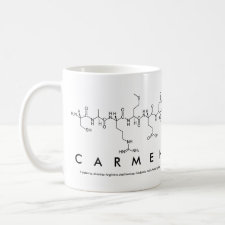
Authors: Concheiro A, Alvarez-Lorenzo C
Article Title: Chemically cross-linked and grafted cyclodextrin hydrogels: From nanostructures to drug-eluting medical devices.
Publication date: 2013
Journal: Advanced Drug Delivery Reviews
Volume: 65
Issue: (9)
Page numbers: 1188-1203.
DOI: 10.1016/j.addr.2013.04.015
Alternative URL: http://www.sciencedirect.com/science/article/pii/S0169409X13001002
Abstract: The unique ability of cyclodextrins (CDs) to form inclusion complexes can be transmitted to polymeric networks in which CDs are chemically grafted or cross-linked. Combination of CDs and hydrogels in a single material leads to synergic properties: the hydrophilic network enhances biocompatibility and prevents dilution in the physiological medium increasing the stability of the inclusion complexes, while CDs finely tune the mechanical features and the stimuli-responsiveness and provide affinity-based regulation of drug loading and release. Therefore, CD-functionalized materials are opening new perspectives in pharmacotherapy, emerging as advanced delivery systems (DDS) for hydrophobic and hydrophilic drugs to be administered via almost any route. Medical devices (catheters, prosthesis, vascular grafts, bone implants) can also benefit from surface grafting or thermofixation of CDs. The present review focuses on the approaches tested to synthesize nano- to macro-size covalently cross-linked CD networks: i) direct cross-linking through condensation with di- or multifunctional reagents, ii) copolymerization of CD derivatives with acrylic/vinyl monomers, and iii) grafting of CDs to preformed medical devices. Examples of the advantages of having the CDs chemically bound among themselves and to substrates are provided and their applicability in therapeutics discussed
Template and target information: Review - cyclodextrin-based hydrogels
Author keywords: cyclodextrin, hydrogel, Drug-device combination product, Nanogel, Drug-eluting medical device, surface functionalization, Affinity-controlled release, Radiation-induced grafting, Chemically cross-linked cyclodextrins



Join the Society for Molecular Imprinting

New items RSS feed
Sign-up for e-mail updates:
Choose between receiving an occasional newsletter or more frequent e-mail alerts.
Click here to go to the sign-up page.
Is your name elemental or peptidic? Enter your name and find out by clicking either of the buttons below!
Other products you may like:
 MIPdatabase
MIPdatabase









